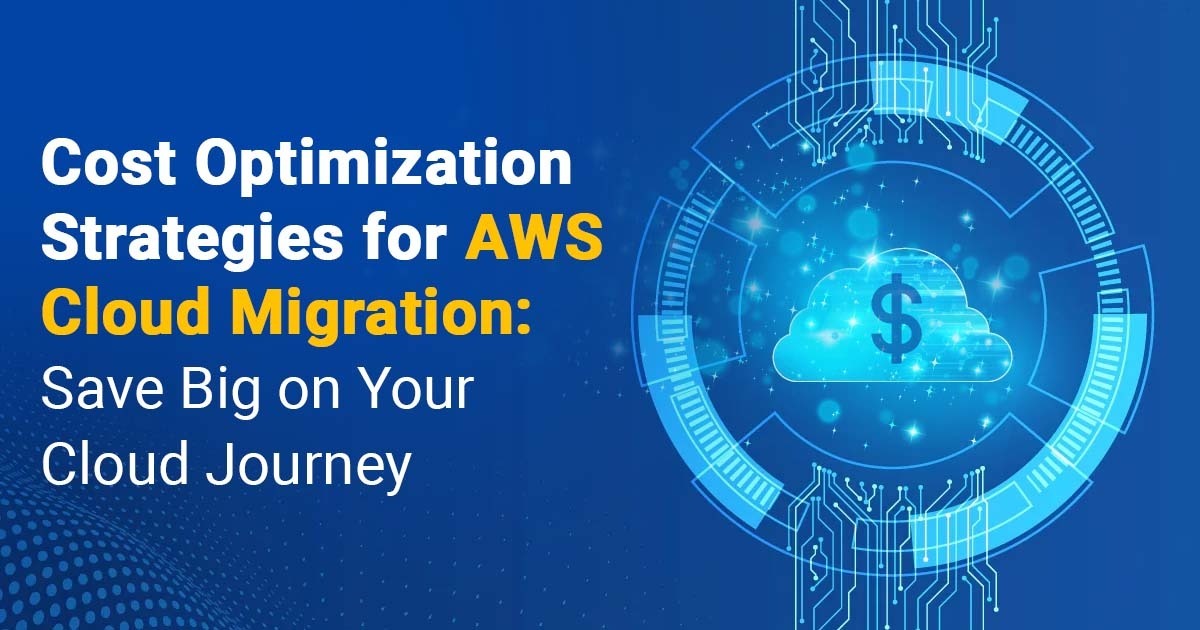Cost Optimization Strategies for AWS Cloud Migration: Save Big on Your Cloud Journey

Migrating to the AWS cloud is a strategic move for businesses looking to enhance scalability, improve performance, and streamline operations. However, without proper planning, cloud migration can lead to unexpectedly high costs. To ensure a cost-effective transition, organizations must adopt cost optimization strategies that balance performance, efficiency, and budget. This article explores key cost optimization strategies for AWS cloud migration, helping businesses maximize savings while maintaining operational excellence.
1. Develop a Cost-Efficient Migration Plan
-
A well-defined migration plan is the foundation of cost optimization. Organizations should:
-
Assess current infrastructure and identify workloads that need to be migrated.
-
Prioritize workloads based on business impact and cost efficiency.
-
Choose the right AWS migration strategy (Rehost, Replatform, Refactor, Repurchase, Retire, or Retain).
-
Leverage AWS’s Migration Acceleration Program (MAP) for cost-saving recommendations and funding assistance.
2. Right-Size AWS Resources
-
One of the main reasons for high cloud costs is over-provisioning resources. To avoid unnecessary expenses:
-
Use AWS Compute Optimizer to analyze workloads and recommend optimal EC2 instance types.
-
Select appropriate storage solutions such as Amazon S3, EBS, or Glacier, based on data access patterns.
-
Scale resources dynamically using Auto Scaling to match demand fluctuations.
3. Leverage AWS Savings Plans and Reserved Instances
-
To reduce long-term operational costs, businesses should take advantage of AWS’s cost-saving pricing models:
-
AWS Savings Plans: Offer flexible pricing for consistent usage over one or three years with significant discounts.
-
Reserved Instances (RIs): Provide up to 75% savings compared to on-demand pricing for predictable workloads.
-
Spot Instances: Allow businesses to run non-critical workloads at a fraction of the cost of on-demand instances.
4. Optimize Data Transfer and Storage Costs
-
AWS data transfer and storage fees can add up quickly. Strategies to optimize these costs include:
-
Using Amazon CloudFront (CDN) to cache and deliver content closer to users, reducing bandwidth costs.
-
Leveraging S3 Lifecycle Policies to automatically move infrequently accessed data to lower-cost storage classes (e.g., S3 Standard-IA, S3 Glacier).
-
Minimizing inter-region and intra-region data transfer by keeping data processing within the same AWS region.
5. Automate Cost Monitoring and Budgeting
-
Automation is crucial in tracking and controlling AWS expenses. Recommended tools include:
-
AWS Cost Explorer: Provides detailed cost analysis and forecasting.
-
AWS Budgets: Helps set custom alerts when spending exceeds predefined thresholds.
-
AWS Trusted Advisor: Identifies unused or underutilized resources to cut costs.
-
AWS Lambda & Auto Scaling: Automate scaling to avoid unnecessary costs during low usage periods.
6. Use Serverless and Containerized Solutions
-
Migrating to serverless or containerized architectures can lead to significant cost savings:
-
AWS Lambda: Reduces costs by running code only when needed, eliminating idle compute costs.
-
Amazon ECS & EKS: Efficiently manage containers, optimizing infrastructure and compute usage.
-
AWS Fargate: Allows businesses to run containers without managing EC2 instances, reducing overhead costs.
7. Optimize Licensing and Third-Party Software Costs
-
Businesses often overlook software licensing costs in cloud migration. Cost-saving strategies include:
-
Bring Your Own License (BYOL): Use existing software licenses on AWS to reduce new licensing expenses.
-
AWS Marketplace: Compare and choose cost-effective third-party software solutions.
-
Open-source alternatives: Consider open-source databases (e.g., Amazon RDS for MySQL, PostgreSQL) instead of costly proprietary solutions.
8. Conduct Regular Cost Audits and Performance Reviews
-
Post-migration, continuous monitoring is essential to maintain cost efficiency:
-
Monthly AWS cost audits: Identify cost spikes and optimize resource allocation.
-
Performance benchmarking: Compare workload performance against cost to ensure efficient resource utilization.
-
Use FinOps practices: Implement financial governance to track cloud spending and align it with business objectives.
Cost optimization is a critical aspect of AWS cloud migration. By developing a strategic migration plan, right-sizing resources, leveraging savings plans, optimizing data transfer, automating cost monitoring, and using serverless solutions, businesses can significantly reduce their cloud expenses. Regular audits and performance reviews ensure ongoing cost efficiency, making AWS migration a financially viable and scalable solution.
By following these best practices, organizations can achieve a seamless, cost-effective cloud migration and fully leverage AWS’s capabilities without breaking the bank.







